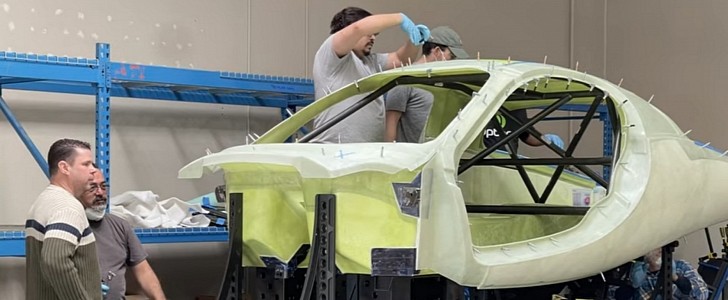After writing about the latest Aptera videos, some Aptera supporters showed they would follow the steps of Tesla fans. It was enough to mention that the roll cage could trigger negative comments for them to qualify the article as FUD, misleading, and even to say the roll cage was meant to test the suspension – which makes no sense at all. As we said before, Aptera needed to explain that a little better, and Chris Anthony did just that.
According to the Aptera CEO, beta builds will have roll cages because the tests will push them "well beyond their normal operating envelope.”
“The intent is to break stuff and test the limits of the Aptera. This leads to many instances where the Aptera could be on its top. Without glass and doors, it is just prudent to add extra protection.”
That is a crucial clarification for such an unusual vehicle like the Aptera. The electric trike will be a reasonably big vehicle. The alpha prototypes were 175 inches (4.44 m) long, 88 in (2.24 m) wide, and 53.5 in (1.36 m) tall, with a 109 in (2.77 m) wheelbase. A two-seater would not need to be this big. However, it has to do with Aptera’s mission: to be one of the most energy-efficient vehicles in the world.
The long and low body ensures it is aerodynamic (only 0.13 of drag coefficient) and delivers a generous cargo space as a welcome side effect. The Aptera carries 25 cubic feet (708 liters) of stuff in the back, as the company’s video about a Costco visit shows.
The deal is that an Aptera is also extremely light – 1,800 pounds, or around 815 kilograms – because it uses a composite body. Some may think that it makes the Aptera a fragile vehicle. Anthony was fast to deny that was the case.
“As for strength, the composites are very strong. In our last roof crush strength (test), our body had the highest roof crush strength of any passenger car on the road. This shows that composites are more than just lightweight; they are strong. This is the reason Formula 1 cars are composites and not steel or aluminum.”
When the beta prototypes are done with “the brutal stability testing” they will endure, Anthony said they ditch the roll cages to start durability testing. We hope Aptera performs them as much as possible to prevent any issues with the production cars. Skipping testing may be quite a problem, especially when mass manufacturing starts, as we wrote a while ago.
“The intent is to break stuff and test the limits of the Aptera. This leads to many instances where the Aptera could be on its top. Without glass and doors, it is just prudent to add extra protection.”
That is a crucial clarification for such an unusual vehicle like the Aptera. The electric trike will be a reasonably big vehicle. The alpha prototypes were 175 inches (4.44 m) long, 88 in (2.24 m) wide, and 53.5 in (1.36 m) tall, with a 109 in (2.77 m) wheelbase. A two-seater would not need to be this big. However, it has to do with Aptera’s mission: to be one of the most energy-efficient vehicles in the world.
The long and low body ensures it is aerodynamic (only 0.13 of drag coefficient) and delivers a generous cargo space as a welcome side effect. The Aptera carries 25 cubic feet (708 liters) of stuff in the back, as the company’s video about a Costco visit shows.
The deal is that an Aptera is also extremely light – 1,800 pounds, or around 815 kilograms – because it uses a composite body. Some may think that it makes the Aptera a fragile vehicle. Anthony was fast to deny that was the case.
“As for strength, the composites are very strong. In our last roof crush strength (test), our body had the highest roof crush strength of any passenger car on the road. This shows that composites are more than just lightweight; they are strong. This is the reason Formula 1 cars are composites and not steel or aluminum.”
When the beta prototypes are done with “the brutal stability testing” they will endure, Anthony said they ditch the roll cages to start durability testing. We hope Aptera performs them as much as possible to prevent any issues with the production cars. Skipping testing may be quite a problem, especially when mass manufacturing starts, as we wrote a while ago.







